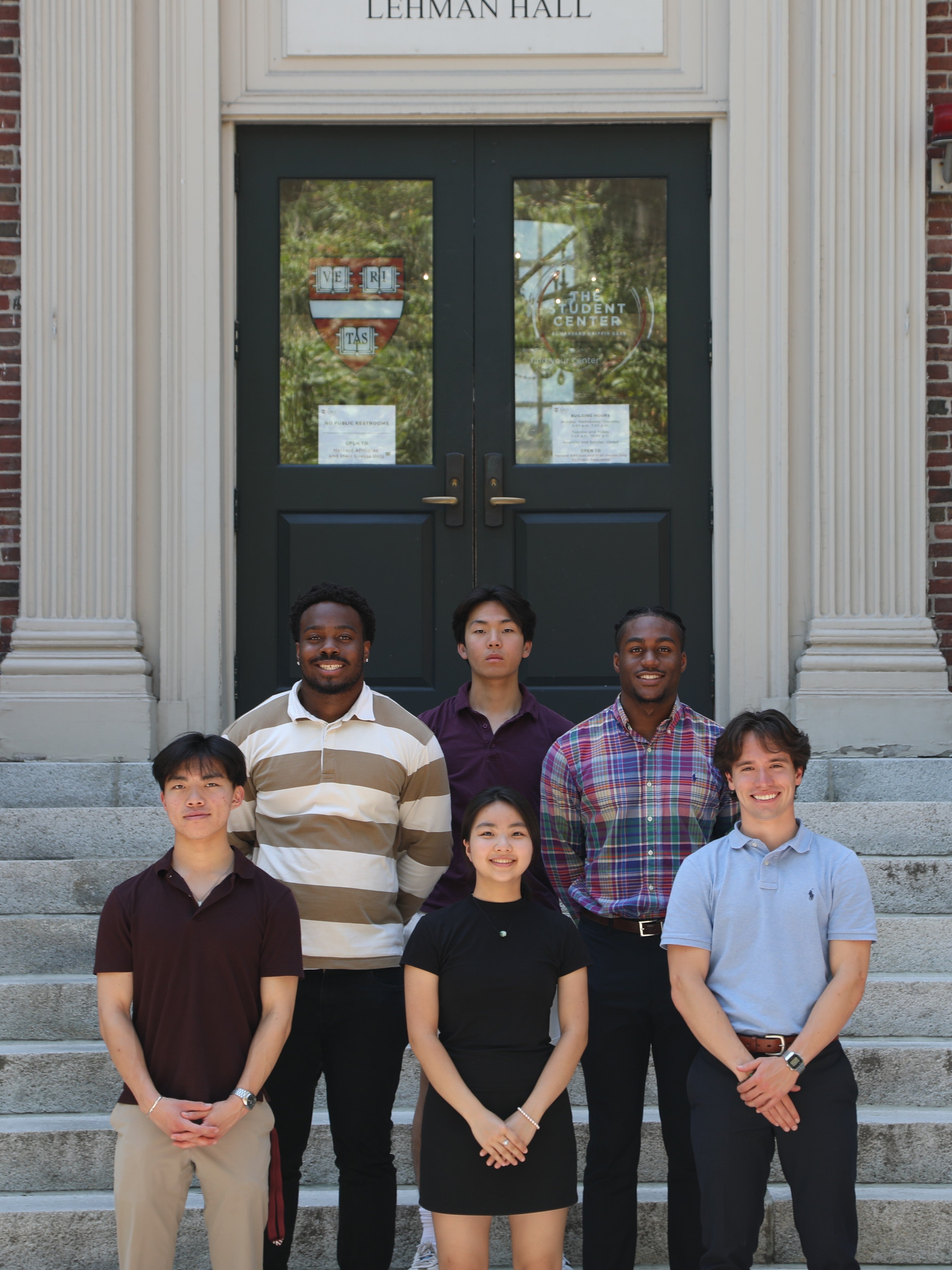By Aanya Goyal
The rise of Artificial Intelligence (AI) has sparked significant debate about its impact on employment. While many predict widespread job losses due to automation, others argue that AI will enhance productivity and create new roles. This research examines whether the fears of job displacement are supported by current data and historical trends in technological change. Drawing from studies by various economists, authors, organizations and industry reports, this paper discusses the actual impact of AI on job market and the opportunities created. The paper also explores various ways for organizations and governments to protect workers against potential threat and adapt successfully to this shift.
INTRODUCTION
Artificial Intelligence (AI) has emerged as a transformative force across various sectors. AI is quickly becoming an integral part of modern-day industries by automating tasks and processes traditionally performed by humans. AI systems reduce costs and increase efficiency. As AI advances, widespread job displacement is a major concern among many.
People worry that automation of these tasks will lead to a reduction in the requirement of the workforce and the broadening of the income inequality gap. However, some argue that this shift in AI-related jobs will create more job opportunities than it displaces, shifting the nature of jobs that require more creative and problem-solving skills.
This research analyzes whether job displacement concerns are backed by current evidence and actual economic outputs. It also considers policy implications that the government would need to navigate and deal with in this evolving workspace environment.
Despite the prevalent fears and concerns around job displacement by AI, this research argues that the economic impact of AI is more multifaceted than what is often portrayed; historical trends, global data, and emerging evidence suggest that AI is more likely to transform and cause a shift in nature rather than eliminate employment. The perception of mass unemployment due to automation is often exaggerated compared to actual labor market responses.
LITERATURE REVIEW
AI’s integration into the workplace has sparked debates about its effects on employment and job opportunities. This literature review provides insights into recent studies showcasing different perspectives.
A 2023 study by Joseph Briggs and Devesh Kodnani shows that an estimated 300 million full time jobs globally are exposed to automation. This figure reflects a growing concern about the impact of AI technologies, especially generative AI and machine learning. A study by Georgieva (2024) indicates that AI will affect almost 40% of jobs globally, with the potential to complement existing roles and create new opportunities. David Autor et al. (2024) highlight that over 60% of current occupations did not exist in 1940, showing how technological advancements consistently create new forms of employment.
This fear of automation is contradicted by many reports, such as the Challenger Report 2024, which showed that only 2% of the job cuts in the industry were due to AI implementation. This contradiction between projected long-term impacts and current realities raises important questions about how AI will shape the workforce in the coming decades. While some fear mass unemployment, others argue that AI will change the nature of work, requiring reskilling and upskilling rather than leading to widespread job loss.
BODY
Although Artificial Intelligence entering the workforce is comparatively new, we have seen instances since the beginning of industrialization and technological advancements affecting the job markets. In the 18th and 19th centuries, the introduction of mechanical equipment and machinery into industries such as the textile industry led to initial resentment against these machines, with artisans protesting against the introduction of machinery in fear of loss and displacement of their jobs. While these innovations led to the displacement of a few traditional artisans, the machines could not function by themselves and require people to repair, manage, and function them thus creating a plethora of job opportunities in factories, transportation, etc. Thus, the Industrial Revolution massively enhanced productivity, Similarly, in the 20th century, the introduction of computers and technology reduced the need for labor for certain manual tasks which led to concerns about technological unemployment. However, a shift took place like jobs creating new opportunities in service oriented fields such as telecommunication, finance and healthcare, analysis etc. contributing to overall productivity increase and economic growth.
With the expansion and growth of technology, basic jobs that were routine and repetitive did get affected, some completely automated as well but this did not mean that the overall number of jobs in a particular sector declined, studies show a more positive impact of these integrations.
The anticipated widespread automation with the introduction of computers did not fully come into effect due to several factors. The transition required substantial investments in new machinery and infrastructure, and many tasks proved too complex for early computers to handle efficiently. Additionally, creating new industries and services around computer technology generated employment opportunities that offset job losses. Moreover, technological advancements have historically led to higher economic growth and increased demand for skilled labor. The
Organisation for Economic Co-operation and Development (OECD, 2019) reported that technological progress has been accompanied by higher output, productivity, and overall employment. For example, the adoption of automation technologies has been associated with the creation of higher-paying jobs requiring advanced skills. The same study found that new jobs created due to automation paid, on average, nearly £10,000 more per year than those that were lost, underscoring the economic benefits of embracing technological change. In summary, while technological innovations have historically displaced certain jobs, they have also led to significant economic growth, productivity improvements, and the creation of new, often higher-paying, employment opportunities. This pattern suggests that with appropriate adaptation and investment in skills development, the workforce can successfully navigate the challenges posed by technological change.
A recent study by economist David Autor, cited in the report (2024), found that 60% of today’s workers are employed in occupations that didn’t exist in 1940. This implies that more than 85% of employment growth over the last 80 years is explained by the technology-driven creation of new job profiles The introduction of personal computers and the internet have created over 19 million jobs with a net gain of 15.8 million jobs in the US over the last few decades. And that’s about 10 percent of the labor force today that is involved in an occupation or a job that’s a direct result of the introduction of this technology. It’s important to remember in all the discussion of automation today that there will be growth of occupations and industries, that we can’t even imagine that over time will replace the work that’s being automated. (McKinsey & Company, 2018).
We often come across staggering statistics online that spark widespread concern about job losses due to AI automation. For example, the IPPR reports that up to 8 million UK jobs could be affected or at risk from AI unless the government takes action (IPPR, 2024). Reading such figures in the media or research reports can naturally lead to panic about job security. A survey conducted by business insider, which polled 1,200 executives and IT professionals across the US and UK, showed whopping 74 percent of IT workers are worried that AI could render many of their current skills obsolete with 69 percent of respondents fearing that AI might eventually replace them altogether. (Divyanshi Sharma, 2024). It is clear that anxiety levels are high. However, it is crucial to understand what these reports truly mean by "exposed" or "at risk." In most cases, these statistics do not indicate the complete replacement or elimination of human labor. More often than not, they refer to AI integration within jobs—where automation enhances and supplements human work rather than entirely replacing it. The International Labour Organisation(2024) finds that 5.5 per cent of total employment in high-income countries is potentially exposed to the automating effects of the technology, whereas in low-income countries, the risk of automation concerns only some 0.4 per cent of employment. This statistic shows us a somewhat fairer picture of the impact of AI, supporting the claim that the current panic and frenzy among the public about the replacement of their jobs by AI is misplaced
All the stakeholders must play their respective parts towards ensuring that AI results in a positive impact. AI continues to grow with no sign of fading in the foreseeable future; thus, organizations and individuals need to evolve along with AI to ensure that it benefits them to the maximum. Instead of fearing the adverse impact of AI, individuals must focus on continuously learning in the field of technology and AI to their advantage. For us to ensure that changes due to AI result in a positive impact, governments, organizations and employees must play their part. Organizations especially play a vital role in ensuring the preparedness of their employees for this transformative technology. Organizations must prioritize training their employees to upskill and equip themselves
with the right skills to transition with the change. AI is expected to result in the long-term success of the company, but only if companies take timely steps in the right direction. However, employees must not solely rely on getting trained by their companies but instead embrace all opportunities for reskilling and upskilling themselves, particularly in crucial areas like data science and AI. The government can also take steps and formulate policies that prevent the workers from exploitation.
Creating regulatory frameworks that uphold ethical AI practices and protect workers from large scale potential job displacement due to automation is essential. Encouraging collaboration between the private sector and public institutions promotes a unified strategy for workforce development.
Some may argue that the rapid pace at which Artificial Intelligence is evolving sets it apart from past technological revolutions. Unlike previous innovations that unfolded over decades, allowing labor markets to adapt gradually, AI's exponential growth is occurring in just a few short years. This unexpected speed raises concerns that the rate of job displacement could outpace the creation of new roles. In their report, Acemoglu and Restrepo (2020) have warned that while technological change has historically led to net job creation, the current wave of automation driven by AI could concentrate benefits among high-skilled workers while displacing large numbers of low- and middle-skilled workers without sufficient time for reskilling or market adjustment.
Although AI will indeed take over some of the redundant jobs of the present-day world, it simultaneously creates new and more strategic roles for the human workforce. AI is most likely to evolve workers' job profiles, leading to new pathways for different job profiles. This is expected to result in a net increase in overall jobs. For example, banks are expected to integrate, AI-driven chatbots in customer service for quicker, more accurate service whilst reducing scams. AI chatbots can handle a large number of inquiries simultaneously, reducing wait times and improving customer experiences. Thus arises a question about the future of hundreds of workers employed in the call centres. The companies would require personnel in positions such as AI specialists, chatbot developers, and system maintenance personnel who are essential for developing and maintaining these systems. With the chatbots tackling most of the routine enquiries, the human workforce can focus primarily on the complex and sensitive customer issues that require empathy and understanding, qualities that AI currently cannot replicate. This ensures that the overall demand for labor is redirected rather than eliminated.
CONCLUSION
The idea that AI will cause mass unemployment is often overstated and not fully backed by current data. Historical trends show that while some jobs are phased out by technology, new roles often emerge in sectors that didn’t exist before. Fears around AI-induced job loss largely stem from misunderstandings about the statistics presented to the public . AI is expected to automate repetitive tasks while creating demand for new skills in technology and more problem-solving roles. With the right collaborative approach, we can expect AI to result in economic growth, job evolution, and human advancement, making the fear of mass job losses more of a myth than a reality.
REFERENCES
Joseph Briggs Devesh Kodnani. (2023, March 26). The potentially large effects of artificial intelligence on economic growth
https://www.gspublishing.com/content/research/en/reports/2023/03/27/d64e0
Comunale, M., & Manera, A. (2024). The Economic Impacts and the Regulation of AI: A review of the academic literature and policy actions. IMF eLibrary.
https://doi.org/10.5089/9798400268588.001.A001
U.S. Bureau of Labor Statistics. (2017, February 22). Bureau of Labor Statistics. https://www.bls.gov/
What can history teach us about technology and jobs? (2018, February 16). McKinsey & Company. https://www.mckinsey.com/featured-insights/future-of-work/what-can-history-teach-us-about technology-and-jobs
Autor, D., Chin, C., Salomons, A., Seegmiller, B., & Apollo Chief Economist. (2024). New Frontiers: The Origins and Content of New Work, 1940–2018. In The Quarterly Journal of Economics (Issue 3). https://www.apolloacademy.com/wp-content/uploads/2024/08/080424-Chart.pdf
Meghna Krishna, Debunking the AI Job Crisis. (2024, December 17) https://aibusiness.com/responsible ai/debunking-the-ai-job-crisis#close-modal
Generative AI likely to augment rather than destroy jobs. (2024, February 2). International Labour Organization. https://www.ilo.org/resource/news/generative-ai-likely-augment-rather-destroy jobs
Aiprm. (2024, July 11). 50+ AI Replacing Jobs Statistics 2024. AIPRM. https://www.aiprm.com/ai replacing-jobs-statistics/
https://www.oecd.org/en/publications/the-impact-of-ai-on-the-workplace-main-findings-from-the-oecd ai-surveys-of-employers-and-workers_ea0a0fe1-en.html
Acemoglu, D., & Restrepo, P. (2019). Robots and Jobs: Evidence from US Labor Markets. Journal of Political Economy, 128(6), 2188–2244.
https://doi.org/10.1086/705716
Brynjolfsson, E., & Saunders, A. (2010). Wired for Innovation: How Information Technology is Reshaping the economy.
https://papers.ssrn.com/sol3/papers.cfm?abstract_id=2344976
Crisis, D. T. a. J. (2024,). Debunking the AI job crisis. https://aibusiness.com/responsible-ai/debunking the-ai-job-crisis#close-modal
OECD Employment Outlook 2019. (2019, April 25). OECD.
https://www.oecd.org/en/publications/2019/04/oecd-employment-outlook-2019_0d35ae00.html
Manning, S. (2024, July 3). AI’s impact on income inequality in the US. Brookings. https://www.brookings.edu/articles/ais-impact-on-income-inequality-in-the-us/ Sharma, D. (2024, August 23). Majority IT workers fear being replaced by AI, new survey shows. Business Insider. https://www.businessinsider.in/tech/news/majority-it-workers-fear-being replaced-by-ai-new-survey-shows/articleshow/112732724.cms





